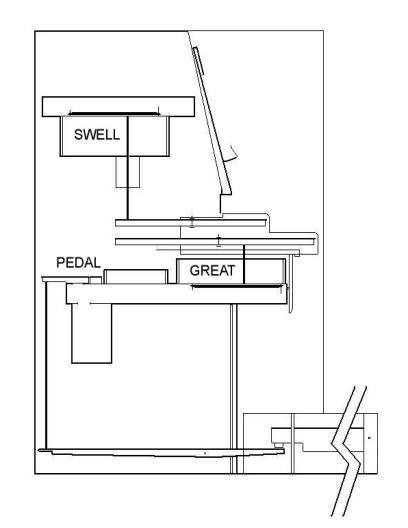
Diagram showing layout of Departments - not to scale
The Swell reeds are enclosed in a heavily constructed compartment or 'Swell Box' which is most effective. There is a single shutter along the front of the box and one along the back, both of which open downwards letting the full sound reach the outside of the instrument. The four ranks are paired, the Bourdon and Oboe ranks face the front of the instrument, whilst the Gamba and Flute ranks face the back. There is a section of fret-work to emit the sound above the swell manual. Above the Swell chest is a seperate reservoir which receives its wind from a trunk running up the side of the action. The trackers which carry the motion from the ends of the swell keys to the pallets are faily long, there being ample room for the swell octave coupler. The Tremulant device is contained in the swell chest and is serviceable only by removal of the reservoir.